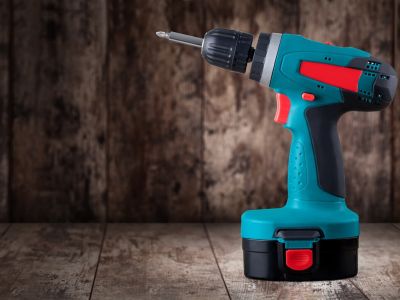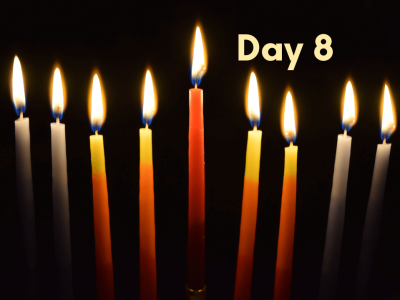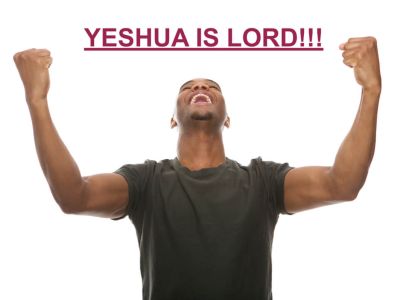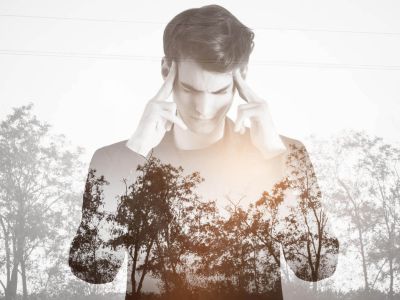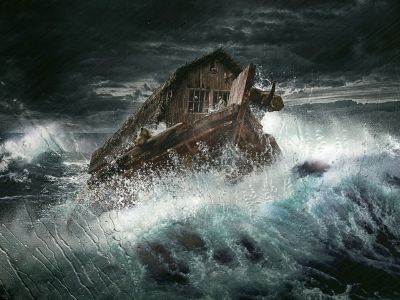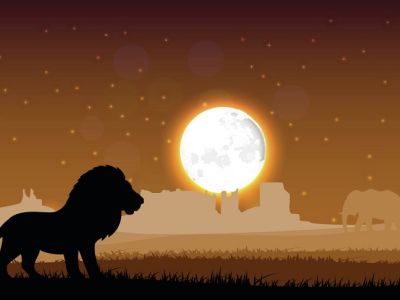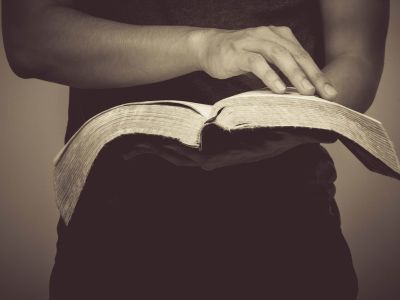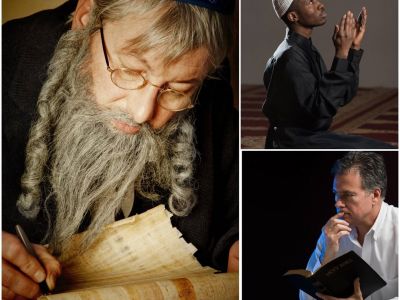Christmas, Hanukkah, and the Anti-Christ Part 4
Christmas, Hanukkah, and the Anti-Christ Part 4
Hanukkah Traditions
We’ve learned much in the first three parts of this series. We started in Part 1 with the historical account of Hanukkah and discovered the incredible story of how one man, with God’s help, stood up to evil, triumphed against all odds, and saved an entire people in the process. In Part 2 we learned how the Messiah kept this festival in the first century and how we could calculate his conception as taking place during it, resulting in His real birth during the Feast of Tabernacles (our September/October). In Part 3 we brought in the connection to Christmas and the antichrist and learned where celebrating it on December 25th came from. In this final part, I would like to share some of my family’s traditions with you and discuss how we transitioned into celebrating the Festival of Lights.
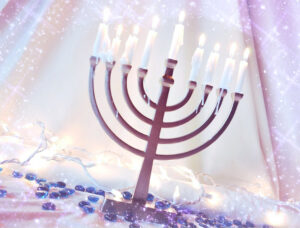
Celebrating Christmas was a major focus of my family when I was growing up. From the mistletoe to sitting on Santa’s lap to waking up on Christmas morning to the mountains of presents that buried that little two-inch baby Jesus in his ceramic manger, Christmas was my holiday of choice as a growing boy. But all that changed in the years following 2002 as the Father began to draw me back past my Protestant roots, past my Catholic roots, past the days of the Roman Emperors, and even past the Gentile Church Fathers, all the way back to my real forefathers, the disciples and followers of the Jewish Rabbi Yeshua. Once I learned about what they did and why they did it, it all began to make sense that somewhere down the line, we Christians had been ripped off where holidays were concerned. Hanukkah in all its beauty had been replaced by the much more commercialized and popular Roman day of Christmas.
When our family learned more about the Feast of Dedication, the time when Yeshua was conceived, we decided to “rebirth” it in our own family. In doing so, we’ve developed a few traditions that I would like to share:
DECORATIONS
First of all, we decorate our house with white and blue lights of all kinds. After all, the Messiah, The Light of the World, was conceived during this week and light is the official purpose of this holiday. Just like the menorah lit up the temple in ancient Jerusalem, we fill our temple home with bright lights and decorations.
We also take pictures of the family each year and cut them into or glue them onto stars or snowflakes. To do this yourself, simply take some pictures and blow them up large enough so they can be cut into snowflakes or stars. You can paint the other side blue or other colors and can laminate them to make them stronger. Once we’d made our stars we hung them by multi-colored strings from our ceiling in different parts of the house. It’s a lot of fun to pull the stars out each year and visit those memories all over again.
We also bake sugar cookies in the shape of shofars, hanukkias (the nine-branched menorah created especially for Hanukkah), snowflakes, Hebrew letters, dreidels, and snowmen, and the kids spend hours decorating them. (When you have six daughters, there’s never a shortage of baking.) We always do craft projects with the little ones that we use to decorate the house, as well. Making placemats for the dinner table and laminating them is also a fun way to preserve memories.
The ideas are endless and with a little creativity, you’ll begin to see how fun it is to start your own family traditions. Whatever you decide to do will no doubt be passed down from generation to generation to generation. With this in mind, I would recommend having a family heirloom that can be passed down, as well. Maybe it’s a special menorah or a special Hanukkah blanket with everyone’s names embroidered on it that only comes out during this time of year. It really doesn’t matter what it is so long as it’s special to you and your family. Memories and traditions are really important. And because this holiday has so much richness built into it and is laced with so much spiritual depth, I encourage you to make it your own and have fun with it.
THE MENORAH
Our family also has menorahs everywhere. There are two different kinds of menorahs. There’s the normal seven-branched menorah that was found in the temple and then there’s the nine-branched menorah that was created especially for Hanukkah, called a hanukkiah. The seven-branched menorah is really a six-branched candlestick with a center Shamash (servant) candle that is used to light all the other lights. Along with other deep meanings, it represents the six days of creation and the seventh day of rest. Similarly, the hanukkiah is really an eight-branched candlestick that also has a servant candle. The eight lights represent the eight days of Hanukkah and the Servant candle represents Yeshua Himself.
We place various menorahs all over the house and it’s traditional to place them on every window sill so everyone can see. Unless your curtains are fireproof, I would recommend the electric ones. There are literally thousands of different kinds available to choose from online.
OUR FIRST HANUKKAH
In an effort to make our first Hanukkah special, I decided to make our main hanukkiah from scratch. We found a really cool base and painted it gold, then filled it with blue sand. From there, we took plastic oil lamps that we purchased at a craft store and wrapped them in construction paper with the words of what each light represented. It was fun to make with the kids and made for some great memories.
We lit the Shamash candle each night and then one candle for each of the eight nights until the eighth night when all the candles were lit. Because the entire holiday is about redeeming the light, I decided that I was going to teach my children a different facet of what light was in the Bible each night. I did this by making the eight nights connect to the history of light in the biblical timeline. On each day I read scriptures that correlate with that topic, along with another scripture or two that have to do with light.
TEACHINGS ON LIGHT
DAY ONE: On day one, the first candle was called the Light of Creation. We read from Genesis and show how the Light of Messiah was brought into our existence and how the physical lights in the universe were also created. We talk about how Adam and Eve were given the first light and how they were supposed to pass it to the next generation. I talk about how from one light will come all the other lights throughout time.
DAY TWO: The second candle we made was the Light of Noah. Much like Judah Maccabee and his father, Noah was one man who stood up to the evil of his day. The torch was passed from Adam to Noah’s family, as Noah’s father would have been alive during Adam’s life. Pretty amazing to think about. There were eight people in the ark and I connect it to the eight days of Hanukkah. I explain how the eight “lights” in the ark were not meant to stay in the ark but are meant to be shared with the world. We can’t keep our light under a bushel!
DAY THREE: The third light is Abraham, the Father of the people of God. This is where the light was reintroduced to the people of earth and where obedience through faith really begins to come to the forefront when Isaac is bound to the altar. We talk about how the beautiful picture of Abraham preparing to sacrifice his son is a picture of Yeshua offering Himself as a substitute for all of us.
DAY FOUR: Day four is Israel, with Moses at the head. The light was reintroduced to him at the burning bush and there’s the miraculous story of the people of Israel being redeemed from Egypt. We talk about the Exodus story and how it foreshadows our Lord Yeshua, who “Passed Over” us and our sins because we put His blood over the doors of our hearts. Then we talk about how the Light came in the form of the Torah commandments and read scriptures that talk about His Law being a light unto our path.
DAY FIVE: The sixth candle is when the Light of Messiah was passed to His disciples. They were told to take that light to the rest of the world.
DAY SIX: After the light was given to the Jewish people, the Father gave the instruction for them to take it to the Gentiles. So the seventh light is the Gentiles. We read Acts 10 and explain how God called Peter to go give the gospel to Cornelius but how Peter resisted, thinking that the Gentiles were unclean. I talk about how the Spirit finally opened his eyes and he realized that the sheet of unclean animals was representative of the Gentiles and that the vision was not about animals at all. He then took the Light to the Gentiles.
DAY SEVEN: From there, the Jewish and Gentile believers spread the light together for 2000 years until they came to us. So the eighth candle is us. We read the scriptures that talk about us being the light of the world and how we are not to hide our light under a bushel.
DAY EIGHT: Finally, we come to the end of time as we know it where the Messiah comes back to usher in the final candle, the Light of the Millennium. This is the thousand-year reign of Messiah where He will be the Light coming directly from the new temple.
You can do as little or as much as you want with each of the above days. Whether you have small children or teenagers, you can create your own traditions. For instance, on day four when I’m talking about the commandments, I turned off all the lights and took my younger children and blindfolded them, making sure they can still see their feet. Then I give them a small flashlight and they have to follow my voice as I lead them to a small gift or some candy. This illustrates how His Word is a lamp unto our feet and a light unto our paths. We’ve also played flashlight tag in the dark house. That’s always fun, even for the older girls.
You could also take construction paper and paint it with black light paint and then cut it out in different shapes, one of which should be an arrow. Have your kids hide their eyes as you put the shapes on the floor throughout your house. Then with all the lights off and just a black light on, they have to follow the signs that lead to a surprise. The black light represents the written Word and the Spirit. This teaches them to follow only the signs of God.
From making miniature arks for Noah’s flood to doing science experiments with light, the sky’s the limit when it comes to creating fun traditions for your family. The great part about this holiday that sets it far apart from Christmas is that it’s not just one day, it’s eight! For eight days we get to invite people over for dinner, go to other people’s houses, eat lots of candy, watch family movies, and really focus on the Light of the world.
One of the games that kids of every age enjoy is the dreidel game. The dreidel is a small top that has four different Hebrew letters on each of its four sides. When you spin it and it lands, each letter tells you to do something different. The game starts with everyone putting a chocolate coin in the middle of the playing space. This is the “pot.” Players take turns spinning the dreidel and do whatever the letter they land on says to do. Whether you get to take half the pot, the whole pot, get nothing, or have to add to the pot, depends on which Hebrew letter the dreidel lands on. It’s a fun game that ends with someone getting a lot of candy! You can buy dreidels online or in stores like Party City or Hobby Lobby, and there are full game instructions online, as well.
Please also watch our video How to celebrate Hanukkah.
So there you have it! A few of the traditions we Staleys have during the Hanukkah season!
Happy Hanukkah!
Jim




